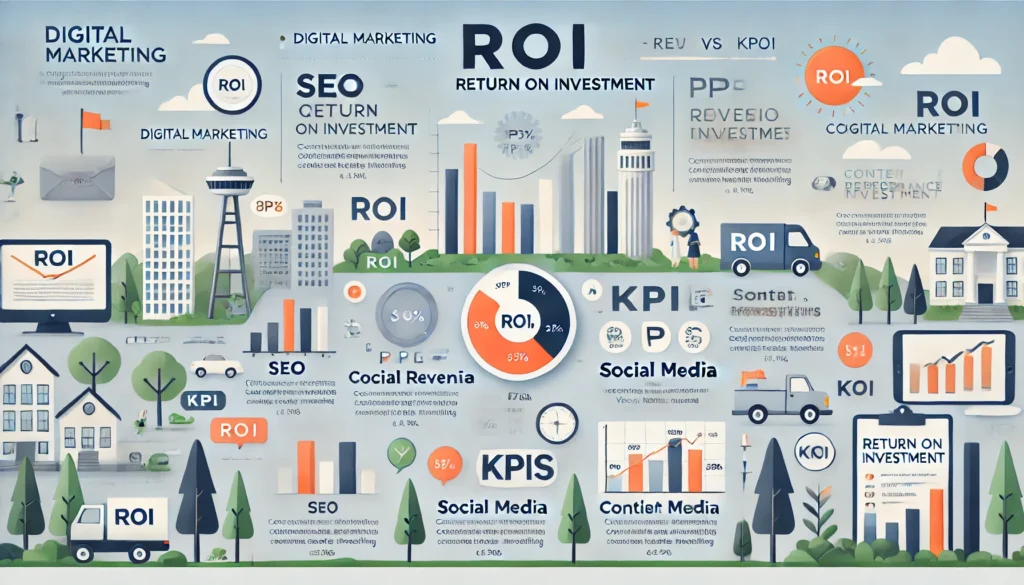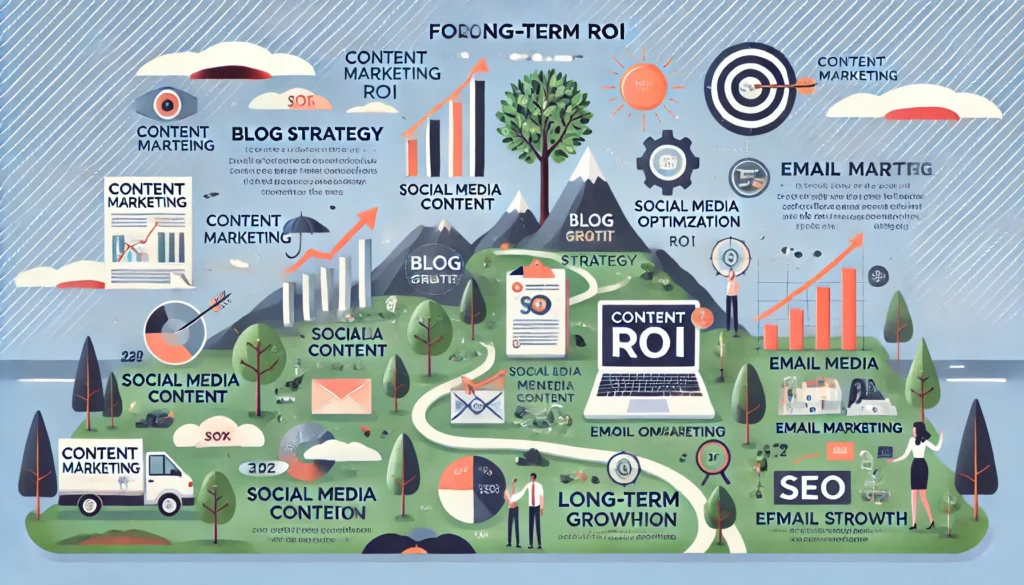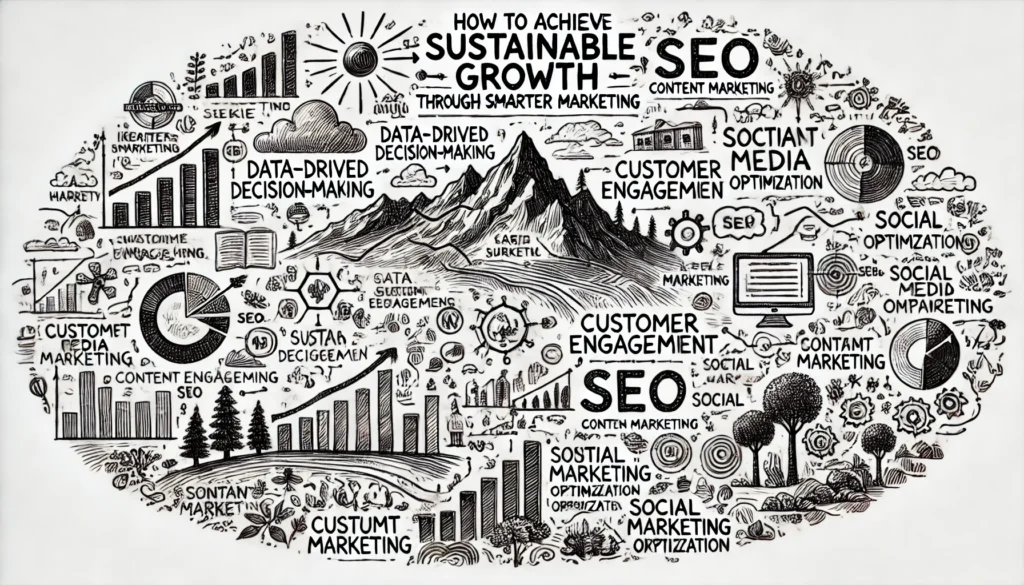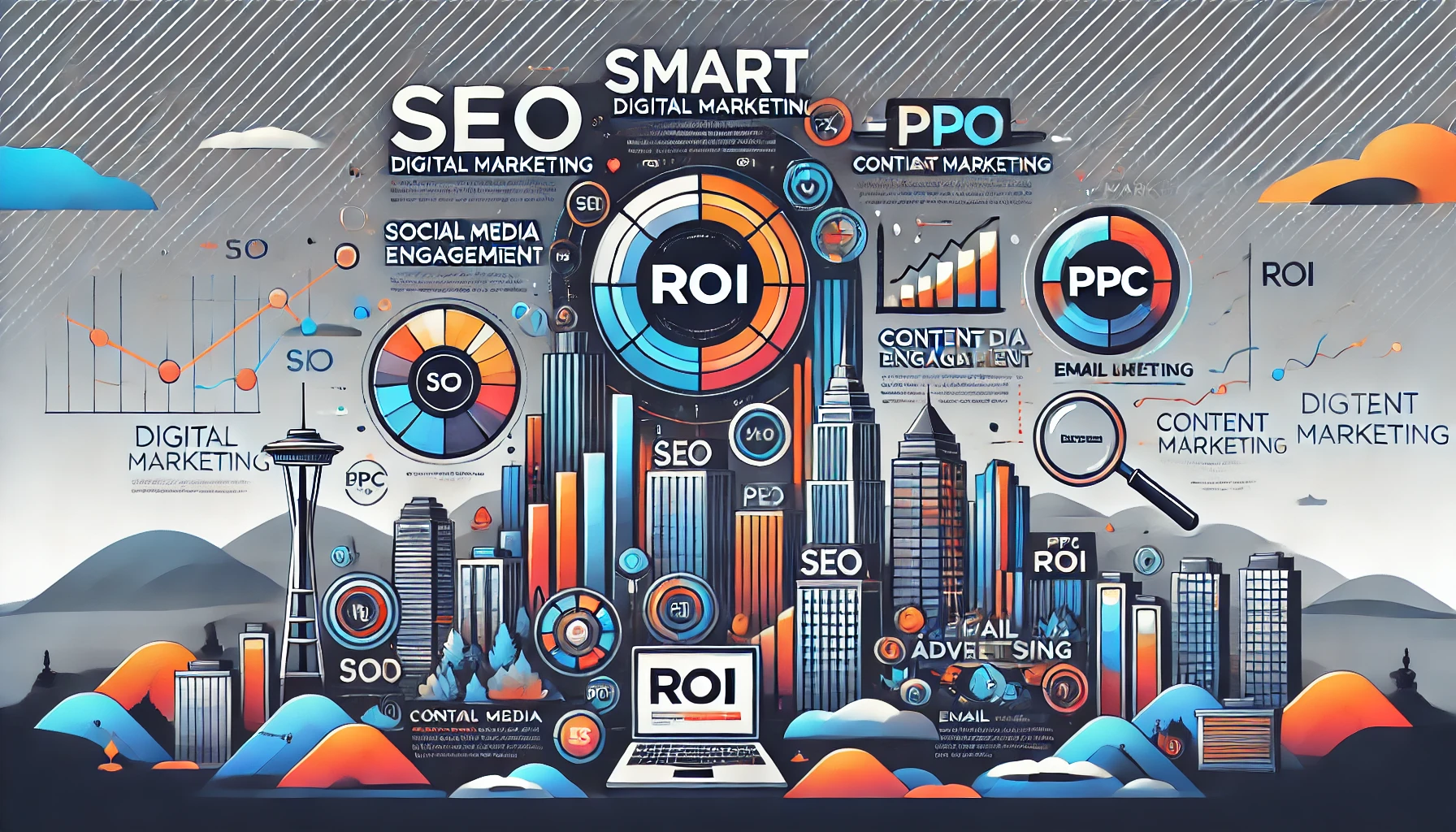Did you know that only 39% of marketers can effectively measure digital marketing ROI? Yet, companies that use data-driven marketing strategies are five times more likely to see above-average returns.
The challenge isn’t just running ads or launching email marketing campaigns, it’s about optimizing every dollar spent. Without marketing automation, Google Analytics tracking, and a solid content marketing strategy, businesses risk losing thousands in wasted marketing spend.
This guide will walk you through key performance indicators, customer relationship management tactics, and campaign performance tracking to ensure you’re not just investing, but maximizing every dollar for sustainable growth.
Understanding ROI in Digital Marketing

Many businesses struggle to determine whether their digital marketing efforts are generating a positive ROI. The problem often lies in misunderstanding how digital marketing ROI should be calculated and tracked.
What Is Digital Marketing ROI?
Simply put, ROI in digital marketing measures how much revenue a campaign generates compared to the investment. The formula is:
(Revenue from marketing – Marketing costs) ÷ Marketing costs = ROI
However, good digital marketing ROI isn’t just about revenue. It also includes:
- Brand awareness – Increased visibility in search engines and social media.
- Customer engagement – Improved interactions via content marketing and social media engagement.
- Customer lifetime value (CLV) – The total worth of a customer over time.
Common Misconceptions About Measuring Marketing ROI
Many marketers assume that ROI is only about sales. In reality, key performance indicators (KPIs) such as customer behavior, organic traffic growth, and campaign performance provide deeper insights. Without tracking these metrics, businesses risk making uninformed decisions about marketing spend.
By using tools like Google Analytics, companies can measure digital marketing ROI accurately and adjust their strategies accordingly.
The Foundation of High-ROI Digital Marketing Campaigns
To maximize ROI in digital marketing, businesses need a solid foundation. This starts with strategic goal-setting, audience targeting, and smart budget allocation. Here’s how to ensure every marketing dollar works for you.
1. Set Clear, Data-Driven Goals
Before launching digital marketing campaigns, businesses should align their objectives with broader business goals. Are you focused on customer acquisition, boosting organic traffic, or increasing customer lifetime value? Defining success metrics ensures effective tracking and better decision-making.
2. Leverage Customer Relationship Management (CRM) Data
A customer relationship management (CRM) system helps businesses understand customer behavior, segment audiences, and personalize email marketing and ad campaigns. This level of targeting significantly improves marketing ROI by ensuring content reaches the right audience.
3. Optimize Budget Allocation Across Channels
Too often, businesses spend the bulk of their marketing budgets on PPC ads without investing in content marketing or organic strategies. A well-balanced marketing strategy should include:
- SEO & Content Marketing – Builds long-term organic traffic and trust.
- PPC & Google Ads – Drives immediate, targeted leads.
- Email Marketing – Engages existing customers and increases customer lifetime value.
- Social Media Engagement – Strengthens brand awareness and improves conversions.
4. Measure ROI Consistently
Without proper tracking, businesses can’t improve. Using Google Analytics to monitor key metrics such as campaign performance, landing page conversions, and customer engagement helps optimize marketing spend in real time.
By applying these key strategies, businesses can improve marketing ROI, eliminate wasted ad spend, and ensure higher returns on marketing investments.
Leveraging Data-Driven Decision Making
Making informed decisions in digital marketing requires a data-driven approach. Without clear insights, businesses risk wasting marketing budgets on ineffective strategies. Here’s how to leverage data for maximum impact.
Use Google Analytics for Real-Time Insights
A well-optimized Google Analytics account tracks traffic, conversions, and key engagement metrics to refine your marketing strategy. Businesses can use Google Analytics 4 (GA4) to gain deeper insights into user interactions, multi-channel attribution, and predictive metrics (Google Analytics).
Adopt Multi-Touch Attribution Models
Many marketers rely on last-click attribution, which gives full credit to the last interaction before conversion. However, this ignores the multiple touchpoints that influence a customer’s decision. A better approach is to use multi-touch attribution, available in Google Analytics and third-party tools like HubSpot (HubSpot Attribution) to better measure marketing ROI.
A/B Testing for Campaign Optimization
A/B testing allows businesses to experiment with different versions of landing pages, email marketing campaigns, and PPC ads to determine what resonates best with their audience. Tools like Google Optimize (Google Optimize) and Optimizely (Optimizely) provide an easy way to test different elements of a campaign.
Leverage Automation Tools for Better Efficiency
Marketing automation tools help businesses scale efforts while reducing marketing costs and improving ROI. Platforms like Marketo (Marketo) and HubSpot (HubSpot Marketing Hub) automate repetitive tasks, improve customer targeting, and enhance campaign performance.
By leveraging data effectively, businesses can calculate ROI more accurately and allocate resources to high-performing marketing channels.
Content Marketing for Long-Term ROI

Content marketing is one of the most cost-effective strategies for improving digital marketing ROI. Unlike paid ads, content marketing builds trust, boosts search engine rankings, and provides long-term value.
Content That Converts
High-quality content, such as blog posts, video marketing, and downloadable resources, helps educate and engage potential customers. Research from Content Marketing Institute (CMI) shows that companies with a strong content marketing strategy generate three times more leads than those that don’t.
SEO & Organic Growth
SEO-optimized content drives long-term organic traffic. Businesses should focus on:
- Keyword Optimization – Use tools like SEMrush (SEMrush) and Ahrefs (Ahrefs) to identify relevant search terms.
- On-Page SEO – Optimize headings, meta descriptions, and internal linking structures.
- Link Building – Gaining backlinks from high-authority sites improves search rankings (Moz Link Explorer).
Case Study: The Power of Evergreen Content
A case study from HubSpot found that updating and repurposing old content led to a 106% increase in organic traffic. This demonstrates the power of continuously optimizing and repurposing high-performing content.
By investing in content marketing, businesses can generate long-term digital marketing success and reduce reliance on paid advertising.
The Role of Automation & AI in ROI Optimization
AI and automation tools are transforming the way marketers optimize campaigns, personalize customer experiences, and increase efficiency.
Marketing Automation Tools
Platforms like ActiveCampaign (ActiveCampaign) and Mailchimp (Mailchimp) automate email marketing, allowing businesses to nurture leads and drive conversions. AI-driven personalization enhances engagement, leading to a higher customer lifetime value.
AI-Powered Campaigns
AI-driven tools such as ChatGPT for marketing (OpenAI) and Phrasee (Phrasee) help optimize email subject lines, ad copy, and customer interactions, improving overall marketing ROI.
Balancing Automation with Human Oversight
While automation improves efficiency, businesses must ensure a balance between AI-driven decisions and human oversight. Over-reliance on automated tools can result in a lack of personalization and brand voice.
Implementing AI in digital marketing efforts enhances efficiency, reduces costs, and ensures businesses achieve good digital marketing ROI.
Avoiding Common Pitfalls That Hurt ROI
Even with a strong digital marketing strategy, businesses can still fall into traps that negatively impact their ROI. Avoiding these mistakes can make a significant difference in long-term success.
Lack of Proper Tracking
Many businesses fail to measure digital marketing ROI effectively. Without tracking key performance indicators like conversion rates, customer lifetime value, and campaign performance, it’s impossible to understand what’s working and what needs improvement.
Solution: Use tools like Google Analytics (Google Analytics) to set up conversion tracking and monitor marketing spend.
Over-Reliance on Paid Ads
Pay-per-click (PPC) ads, such as Google Ads (Google Ads), can provide quick wins but should not be the sole marketing focus. A balanced marketing strategy includes SEO, content marketing, and email marketing to ensure sustainable growth.
Ignoring Customer Lifetime Value (CLV)
Focusing only on short-term conversions without considering customer lifetime value results in high acquisition costs and reduced profitability. Businesses that nurture long-term customer relationships through loyalty programs (Salesforce Loyalty Management) see higher marketing ROI.
Avoiding these common mistakes helps businesses achieve sustainable digital marketing success and ensures every marketing dollar delivers results.

Achieving Sustainable Growth Through Smarter Marketing
A successful digital marketing strategy isn’t just about spending more, it’s about spending smarter. Businesses that consistently measure digital marketing ROI and refine their approach based on data-driven insights see the highest returns.
The key to maximizing ROI lies in optimizing marketing investments across multiple channels. A balanced approach: combining SEO, content marketing, PPC ads, and email marketing. It helps businesses reach potential customers at various points in their customer journey. Additionally, marketing automation tools streamline operations, reduce marketing costs, and improve campaign performance.
To stay ahead, companies must focus on long-term value. By enhancing customer lifetime value, tracking key performance indicators, and ensuring data-driven decision-making, businesses can achieve positive ROI and sustainable growth.
If you’re ready to optimize your digital marketing efforts and maximize ROI, visit Appsecute for powerful marketing tools that help you track, automate, and improve campaign performance.
